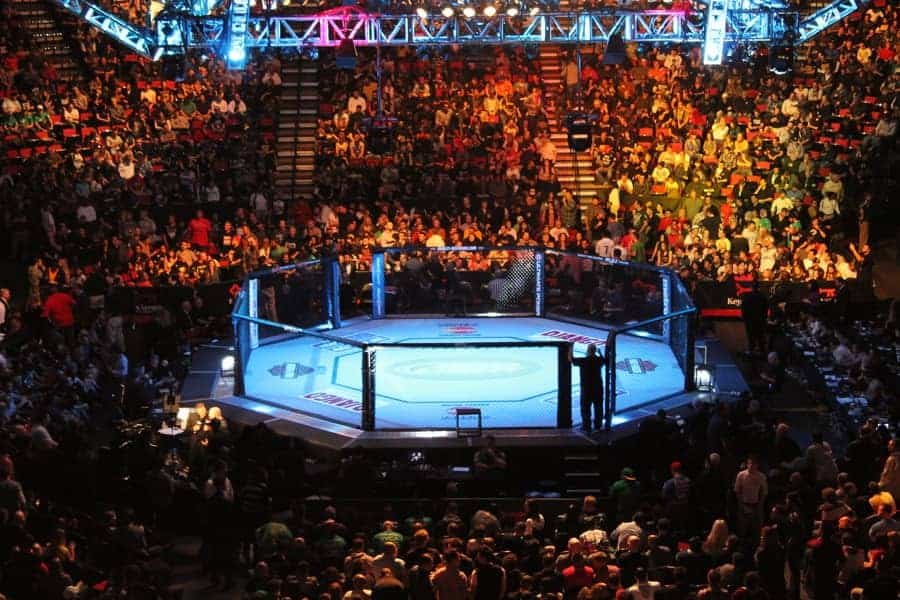The UFC Octagon, the eight-sided enclosure that has become synonymous with the Ultimate Fighting Championship (UFC), is more than just a ring; it’s a battleground where some of the world’s toughest and most skilled fighters collide.
The Octagon was designed by UFC founder Art Davie, who envisioned a more exciting and dynamic fighting arena than the traditional boxing ring or wrestling mat. The octagonal shape allows for more fluid movement and unpredictable angles of attack, which has led to some of the most thrilling fights in MMA history.
The Octagon is also a symbol of the UFC’s commitment to innovation and pushing the boundaries of the sport. Since its introduction in 1993, the Octagon has gone through several iterations, with each new version designed to enhance the viewing experience and safety of the fighters.
The History of the Octagon
Before the UFC adopted the Octagon, most MMA fights took place in boxing rings or wrestling arenas. However, Davie believed that these traditional arenas were too restrictive and didn’t allow for the full range of fighting techniques that MMA encompassed.
He envisioned an arena that was more open and dynamic, which led to the creation of the Octagon. The octagonal shape was chosen for several reasons:
- It provides more space for fighters to move around and avoid being cornered.
- It allows for more unpredictable angles of attack, which can make it more difficult for fighters to defend themselves.
- It creates a more visually appealing and exciting arena for fans to watch.
The Octagon debuted at UFC 2 in 1994, and it quickly became a trademark of the organization. The octagonal shape has become synonymous with the UFC, and it’s one of the things that sets it apart from other combat sports organizations.
The Advantages of the Octagon
There are several advantages to using the Octagon as an MMA fighting arena. These advantages include:
- More space: The Octagon provides more space for fighters to move around and avoid being cornered. This can make it more difficult for fighters to pin their opponents down and control the fight.
- Unpredictable angles of attack: The octagonal shape allows for more unpredictable angles of attack, which can make it more difficult for fighters to defend themselves. This can lead to more exciting and dynamic fights.
- Visual appeal: The Octagon is a visually appealing and exciting arena for fans to watch. The octagonal shape creates a more dynamic and unpredictable fighting environment, which can keep fans engaged throughout the fight.
The Safety of the Octagon
The Octagon has also been praised for its safety features. The eight-sided shape helps to prevent fighters from getting trapped in corners, and the padded walls can help to cushion blows and reduce the risk of injury.
The UFC has also implemented strict safety regulations, including weight classes, gloves, and a ban on certain techniques, which have helped to further reduce the risk of injury in UFC fights.
The Octagon Today
Today, the Octagon is the standard fighting arena for MMA, and it’s used by organizations around the world. The octagonal shape has become synonymous with the sport, and it’s one of the things that makes MMA so exciting and unpredictable.
The Octagon has played a key role in the growth and popularity of MMA, and it is sure to continue to be a major part of the sport for many years to come.

